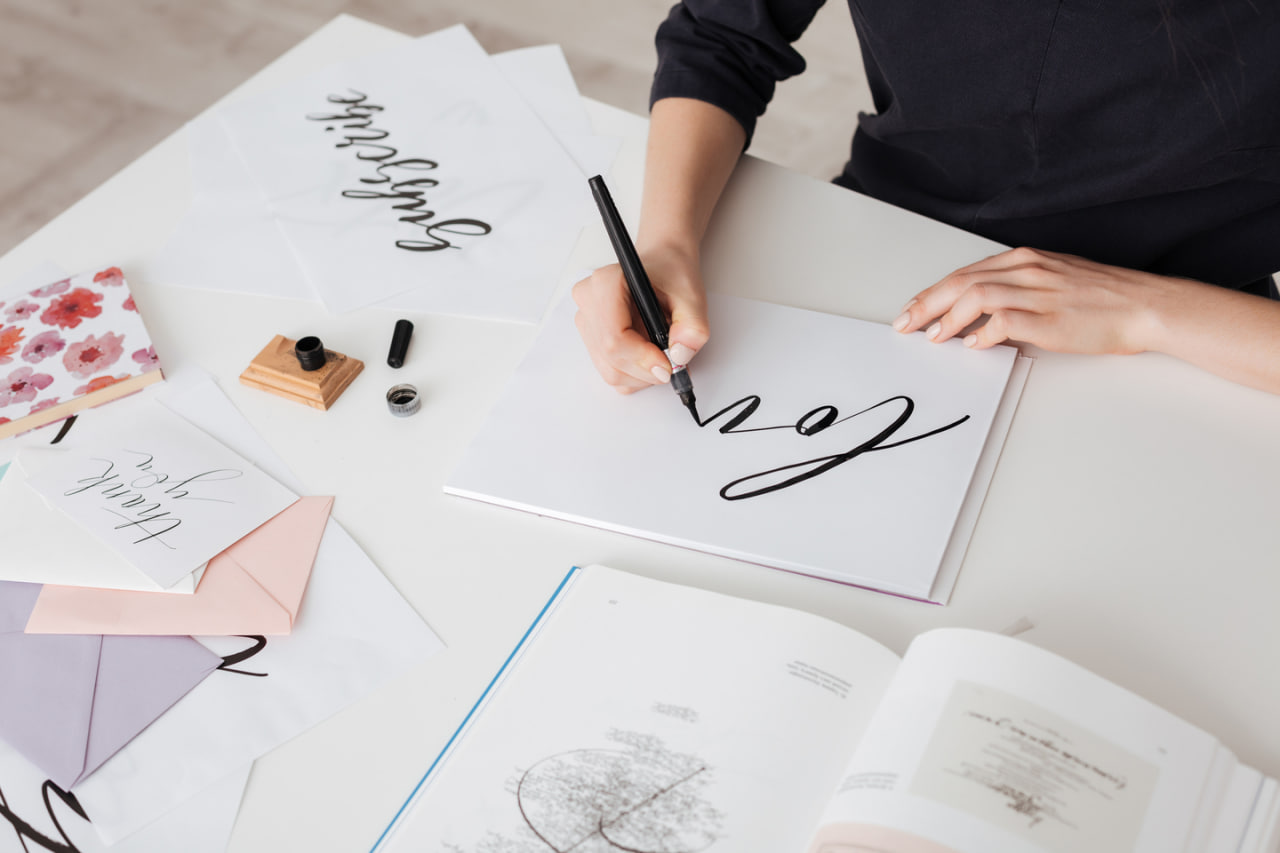Monday to Saturday - 8:00 -17:30

Modern calligraphy is more than just beautiful writing—it is an art form that allows you to express creativity through each carefully crafted stroke. Whether you are a complete beginner or have some experience with traditional handwriting, mastering modern calligraphy requires patience, practice, and the right techniques. In this guide, we’ll explore essential tips to help you get started and develop confidence in your lettering skills.
Understanding Modern Calligraphy
Unlike traditional scripts that follow strict rules and proportions, modern calligraphy offers flexibility and personal expression. The emphasis is on flow, style, and rhythm, allowing each letter to have its own personality while maintaining harmony within words.
Modern calligraphy can be applied in numerous ways, from wedding invitations and greeting cards to wall art and digital designs. The versatility of this art form makes it both enjoyable and practical, giving beginners ample opportunities to experiment and create unique projects.
Choosing the Right Tools
Selecting the right tools is essential for learning modern calligraphy. Beginners should start with:
- Brush Pens — Flexible tips that allow varying line thickness based on pressure.
- Pointed Nibs and Ink — Traditional tools that give more control and a classic aesthetic.
- High-Quality Paper — Smooth surfaces that prevent ink from bleeding and allow consistent strokes.
Understanding how each tool behaves will help you find what works best for your style and comfort level. Experimentation is encouraged, as every calligrapher develops personal preferences over time.
Mastering Basic Strokes
Before attempting full letters or words, focus on practicing basic strokes. These are the foundational movements that make up letters in modern calligraphy. Common strokes include:
- Upstrokes — Light, thin lines created with minimal pressure.
- Downstrokes — Bold, thicker lines made with firm pressure.
- Curves and Loops — Essential for connecting letters smoothly.
Repeated practice of these strokes builds muscle memory, helping beginners achieve consistency and fluidity in their writing.
Learning Letter Formation
Once you are comfortable with basic strokes, begin forming individual letters. Pay attention to:
- Spacing — Proper spacing ensures legibility and balance.
- Angle — Maintaining a consistent angle improves the flow of your words.
- Variation — Incorporating slight variations in letter size and shape adds personality and style.
Practice lowercase and uppercase letters separately, then start connecting them into words, maintaining rhythm and cohesion.
Practicing Word and Sentence Flow
After mastering individual letters, focus on creating words and sentences. The goal is to make your writing appear effortless and harmonious. Tips include:
- Consistency — Keep line weight and spacing uniform throughout the piece.
- Connecting Letters — Smooth transitions prevent letters from looking disjointed.
- Patience — Take your time; rushing can compromise the elegance of your lettering.
Regular practice, even for a few minutes daily, helps improve fluidity and confidence.
Experimenting with Styles
Modern calligraphy encourages creativity, so don’t hesitate to experiment. Try different styles, mix cursive and print, or combine thick and thin strokes in innovative ways. You can also explore various tools, ink colors, and papers to see how they influence your final artwork.
Experimentation is an important part of developing a unique calligraphy style that reflects your personality and artistic vision.
Common Beginner Mistakes and How to Avoid Them
Even beginners with dedication make mistakes, but recognizing and addressing them early helps accelerate learning. Common pitfalls include:
- Pressing Too Hard — Can cause uneven lines and damage paper or pens.
- Ignoring Guidelines — Use light pencil lines to maintain consistent height and slant.
- Skipping Warm-Ups — Always practice basic strokes before starting a project.
Awareness of these mistakes allows you to correct habits and develop more precise and confident lettering.
Creating Your First Projects
Once comfortable with basic techniques, apply your skills to small projects. Greeting cards, personalized notes, or art prints are excellent starting points. Focus on simple designs, gradually increasing complexity as your skill improves.
Sharing your work with friends, online communities, or instructors for feedback also helps refine your technique and build confidence.
